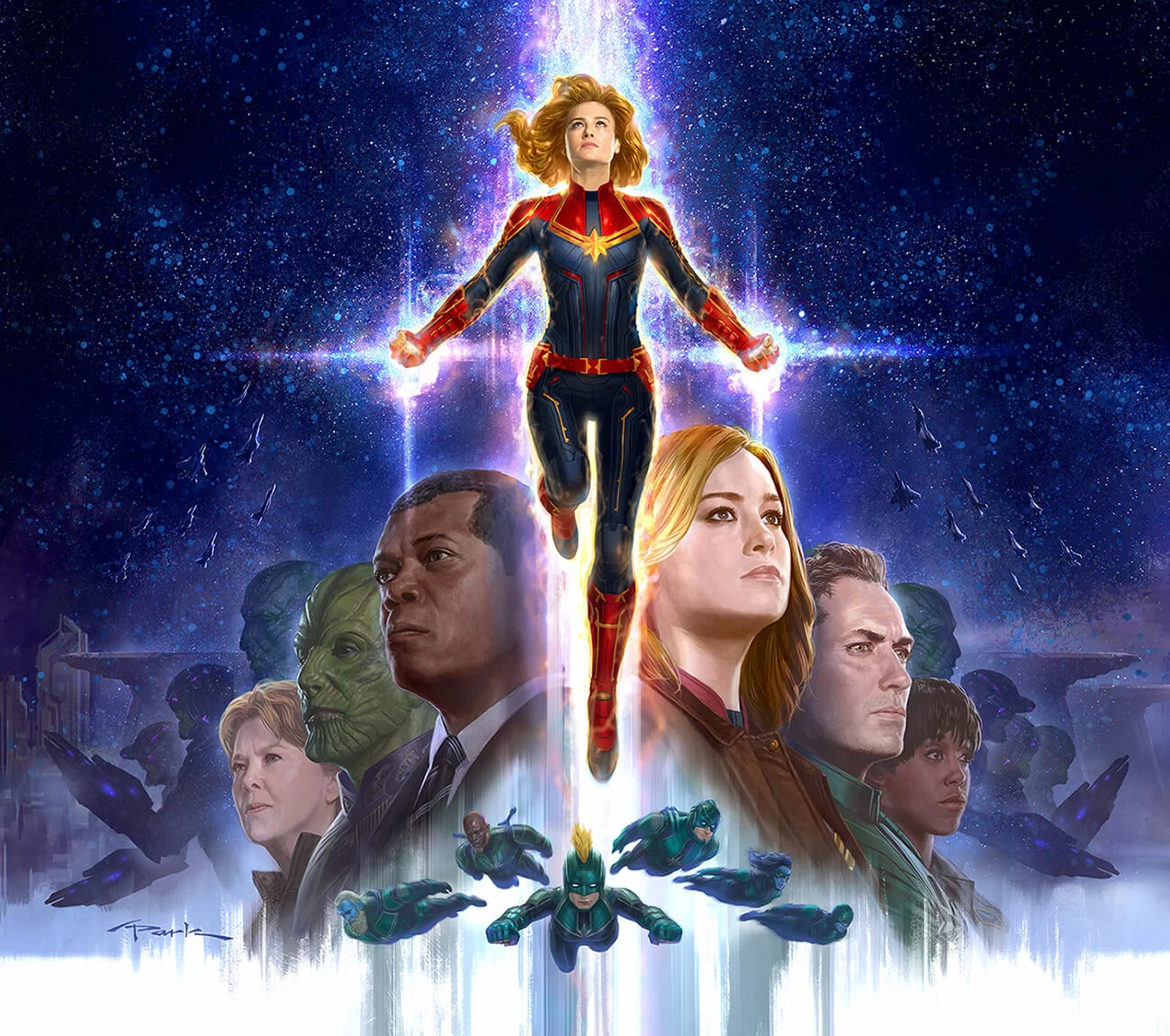

Not many movies spark as much debate before they’re released as Captain Marvel. The 21st film in the Marvel Cinematic Universe (MCU) was also the first female-led movie in the franchise, much to some people’s displeasure . But most fans didn’t seem to mind; at the time of writing it’s the sixth biggest box office opening in cinema history and has taken $1billion around the world. The controversy caused film review site Rotten Tomatoes to ban reviews of movies before they are released, after Captain Marvel was hammered on the site weeks before it appeared in theaters.
Jaleesa Lashay Diaz spoke to Andy Park, Marvel’s Director of Visual Development, about bringing this important character to life on the big screen.
When it came to Captain Marvel, Andy Park was under no illusions over how important it was to get this character right. “We knew it was a big deal and a long time coming,” he says.
Born in New York and brought up in Southern California, Andy dropped out of UCLA when Rob Liefeld, the creator of Deadpool, offered him a once-in-a-lifetime opportunity to work with him as a comic book artist. Andy stayed with Extreme Studios for three years, before going back to college at Art Center College of Design in Pasadena, where he majored in illustration. From there he got another dream offer, to work on the brand new comic based on the Tomb Raider games.
Lara Croft was just the start of Andy creating much-loved female characters; at Marvel he’s worked on many of the female characters like Black Widow, Gamora, Nebula, Scarlet Witch and Wasp — played by Evangeline Lilly, who was the first female co-lead of an MCU film.
“I’m very cognizant of trying to be respectful to the source material but bring a believability and reality that is definitely not sexualized or gratuitous in any way,” he explains. “For both Wasp and Captain Marvel, every design that I did, I always had that in mind.”
Previously, female comic book characters were generally designed by young men, for young men. “These designs suffered from having a very skewed male perspective, and often impractical gratuitous looks,” Andy explains.
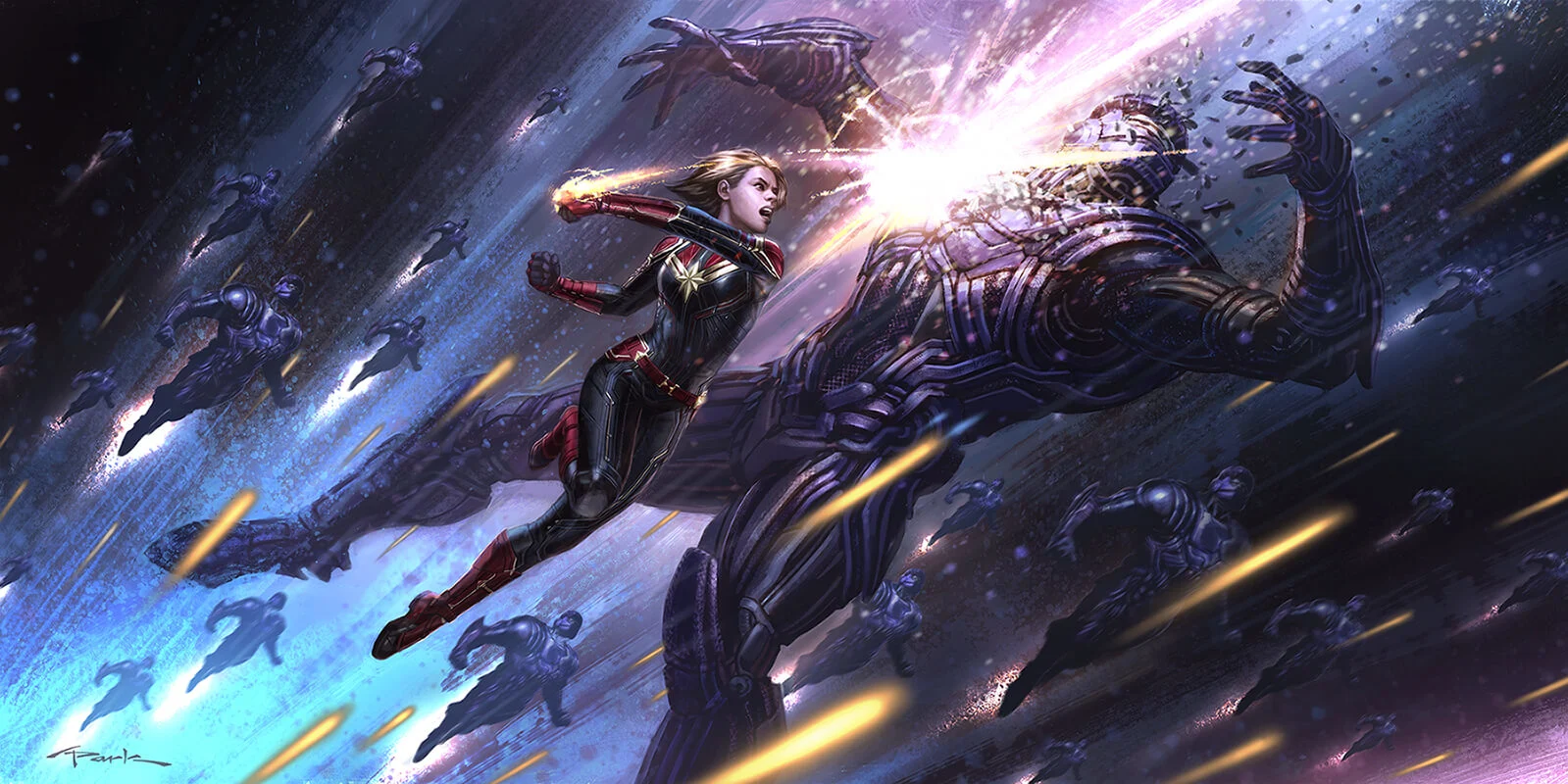
They wouldn’t be wearing revealing clothes when they’re trying to go battle aliens.
For Captain Marvel Andy and his team started with some basic questions about what would be practical for an elite extraterrestrial warrior to wear. “They wouldn’t be wearing revealing clothes when they’re trying to go battle aliens,” he points out.
The visual development begins with creating the concept designs. It’s an invigorating process, because it happens while the story is being created. They knew the screenplay was going to give Carol Danvers a different origin story, and this fed into their thinking, as did the visual history of the character in previous outings.
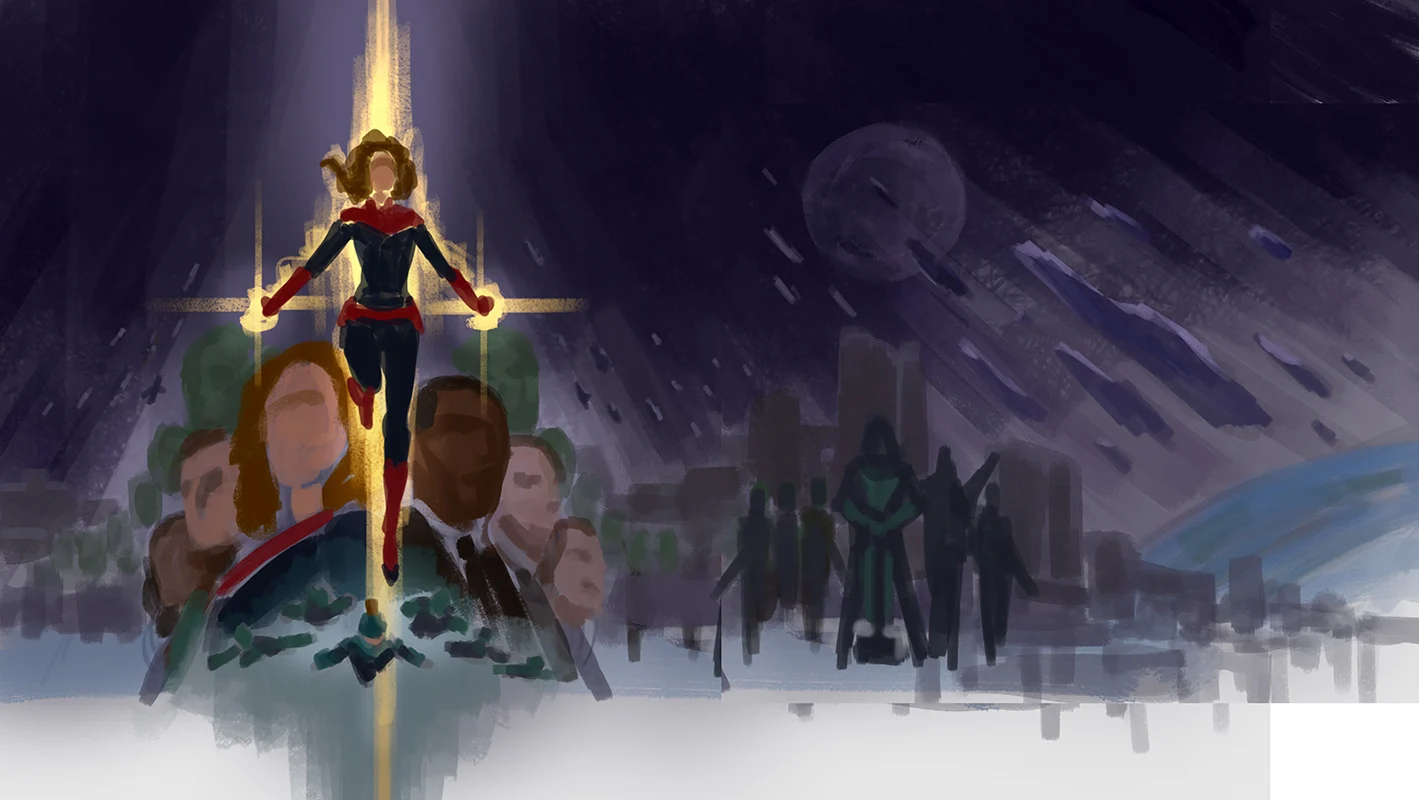
In the Kree world, Starforce are essentially elite military force. They’re celebrities, and so their uniforms reflect that.
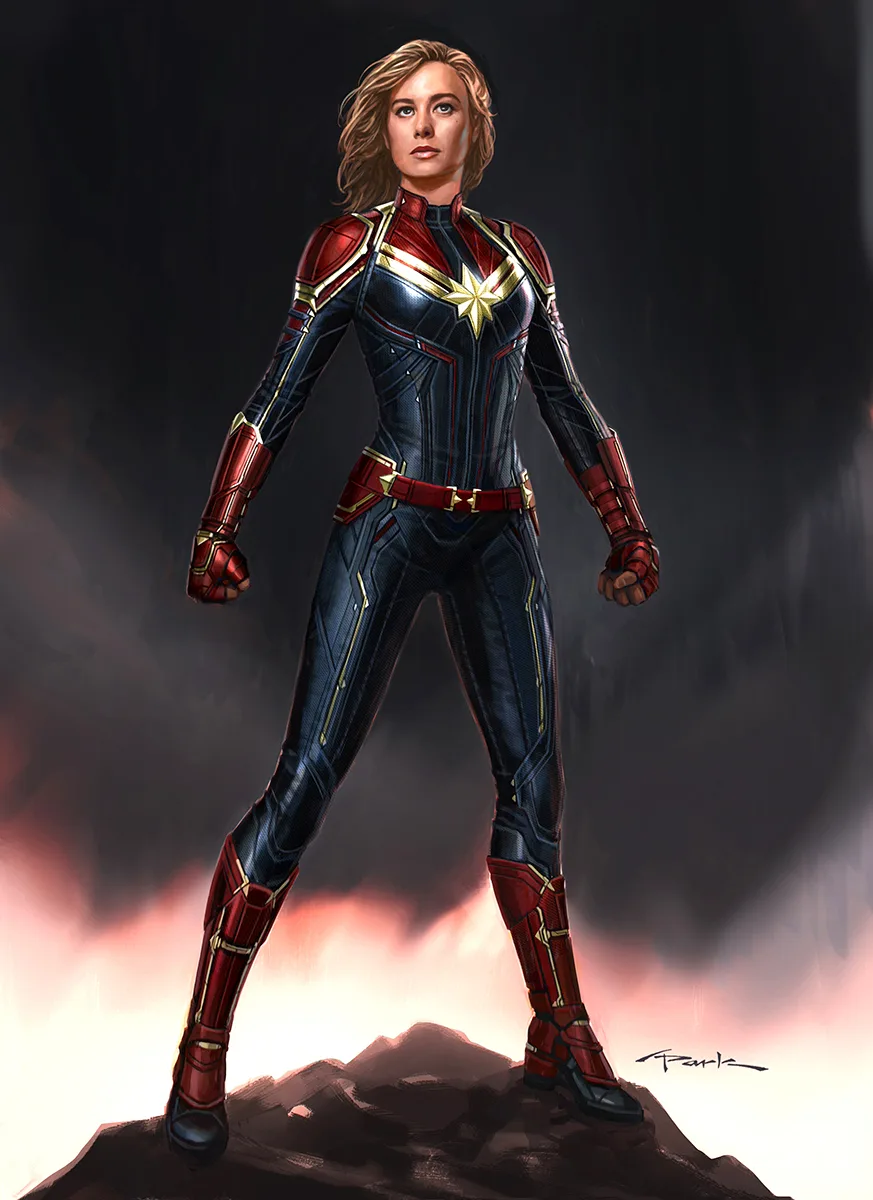
“Captain Marvel has been around since the 1960s, but she was always a background character,” Andy explains. He took a lot of inspiration from Jamie McKelvie’s 2012 redesign, which informed a lot of the decisions Andy and his team made for the film.
“It was more practical and made a lot more nods to her airforce military background,” he says. “I wanted to create a suit that was believable, that could endure the rigorous space travel, and one that is also a symbol. In the Kree world, Starforce are essentially elite military force. They’re celebrities, and so their uniforms reflect that.
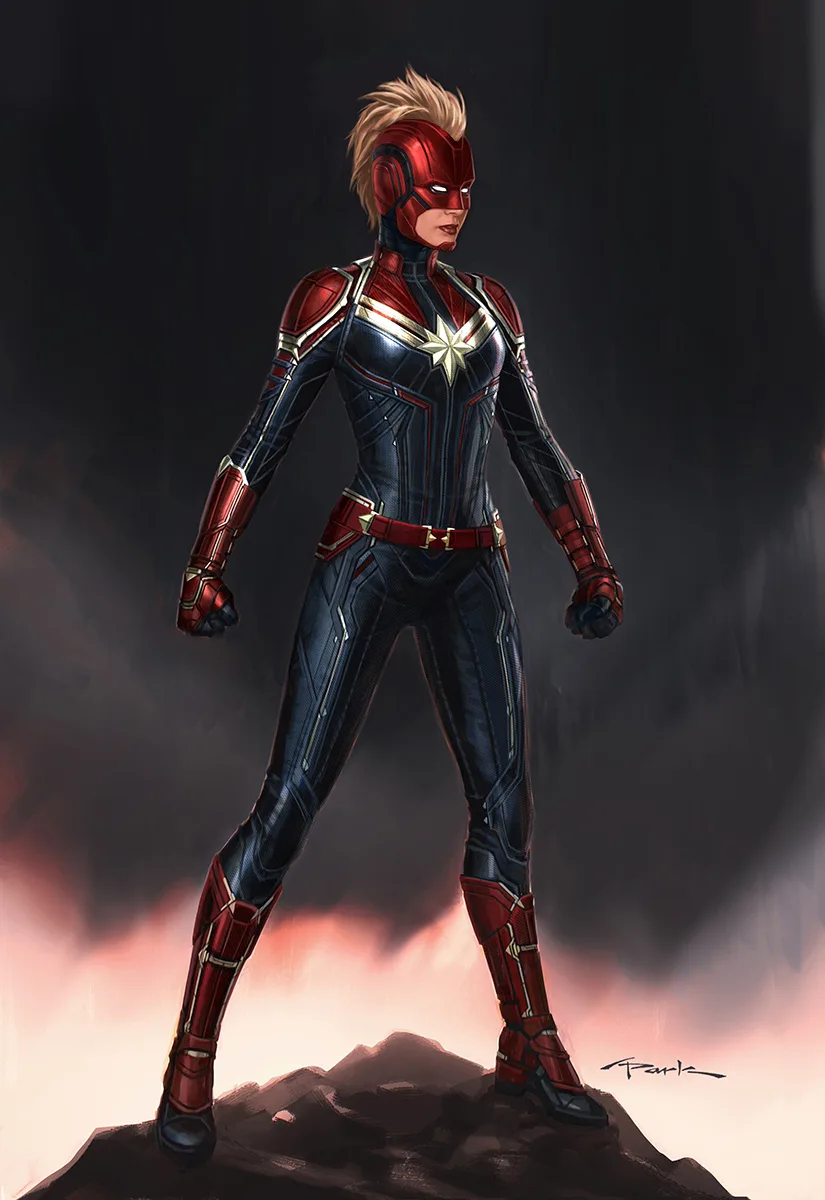
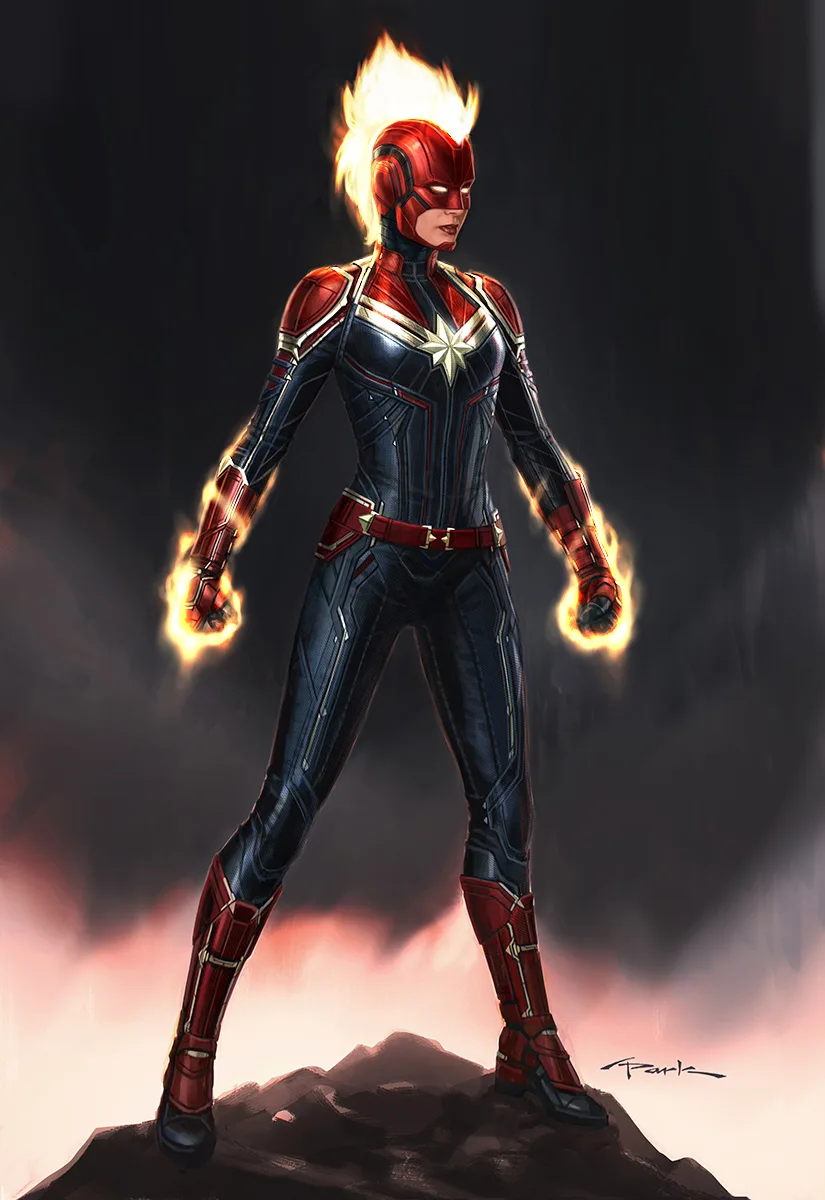
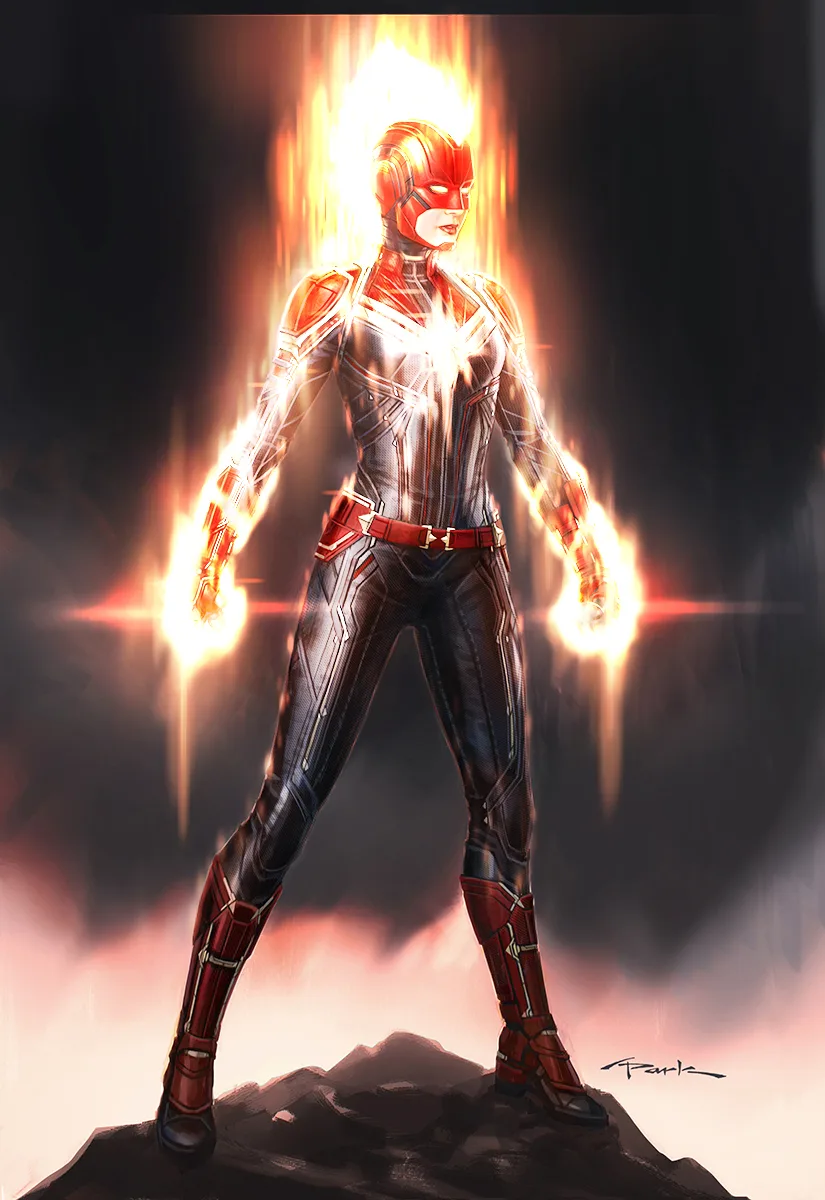
“In the beginning, I was doing a lot of designs that had a feeling of the red, gold and blue suit we know. But I was doing some that were distinctly different and more alien. I was playing with a lot more metals and materials and design lines.
“Eventually, the idea came up that it's more of a color change – that those alien suits go through transformations of camouflage, because they go on missions and need to blend into their environment.”
And so Captain Marvel's suit switches between the green and silver worn by the Starforce soldiers into the red, gold and blue. There are also subtle differences alongside the color change – the red suit has additional armor pieces and the star emblem on her chest changes too, with extra gold bands going up to her shoulders. "When you see it change, you're like 'wow.' It gets a really strong read."

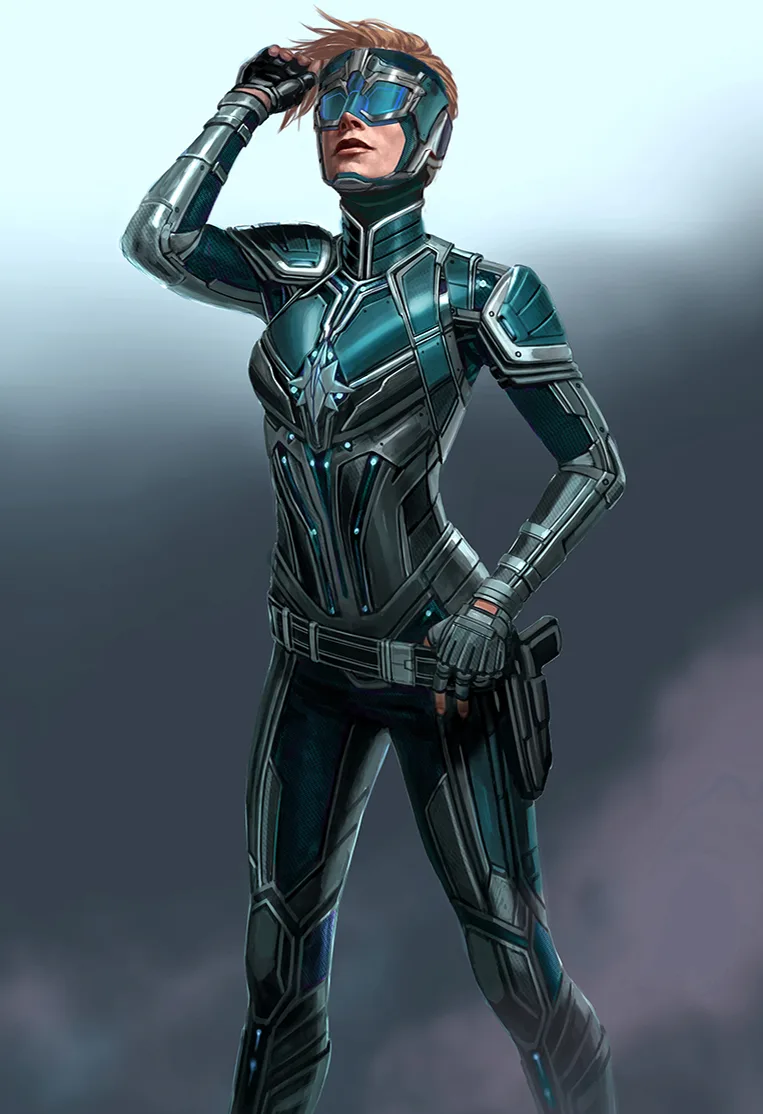

Once the concept designs have been agreed with the director, Andy and his team then work closely with the costume department. For Captain Marvel, this was led by Sanja Milkovic Hays.
“It’s her job to take the design and make it real,” he explains. “That’s the other part of my job I love, seeing the fabrics, helping them with the lines and textures. They have so many amazing female costumers and it’s just a pleasure to work with them.”
They get very specific on every piece, molding it to be bespoke for Brie Larson who plays the title character. “The armor was made with Rush Sinkle over at Film Illusions. Of course the helmet’s a big part, so we would do the 3D model and then we would work with him to figure out, using a scan of Brie, how we get it to fit correctly on her head and look as good as it can?”
The helmet is especially complicated for this character as the 2012 comic book version shows her hair coming out of the top in a mohawk. Andy has admitted that early on, they felt they wouldn't be able to pull this off on screen, but in the end they did, and it looks great.
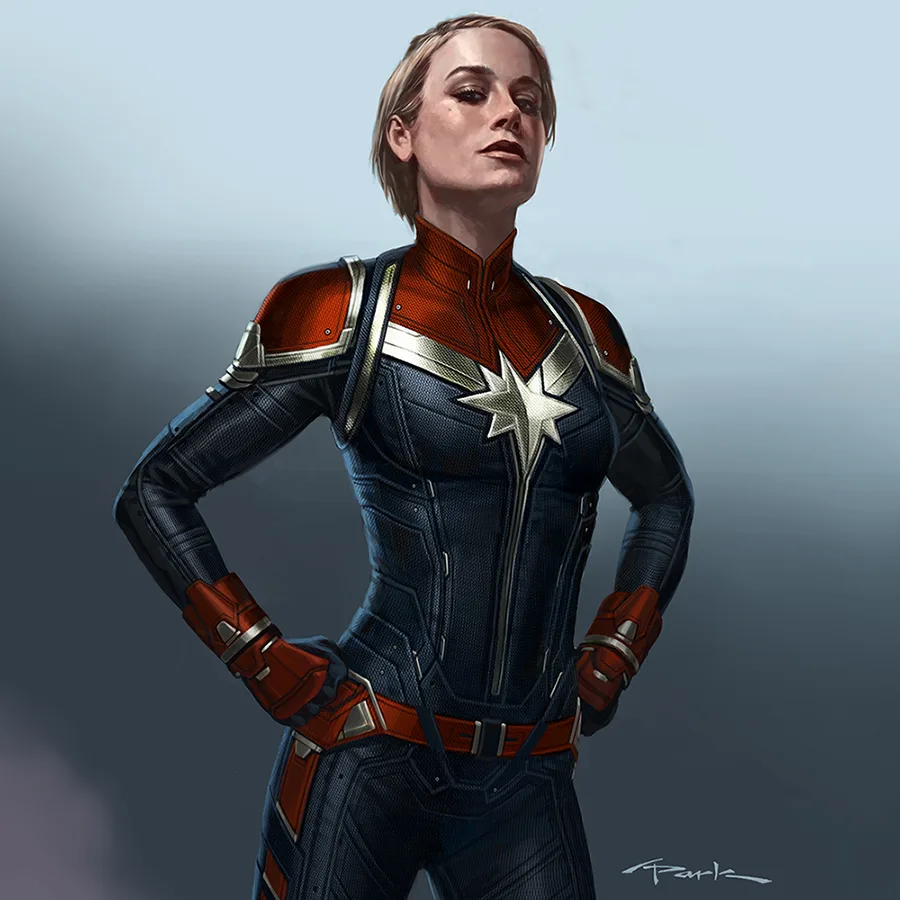
But working on a film like this is about much more than aesthetics. Captain Marvel tells a beautiful story of female empowerment. With the introduction of characters like Black Panther, Shuri, Captain Marvel and Monica and Maria Rambeau, Marvel Studios makes clear that it intends to be on the right side of film history and it’s committed to making progress towards diversity and inclusion.
Andy and his team have the privilege of using their art to contribute to these efforts and witness the impact when they see their drawings being worn by fans at Comic Con events.
You’re able to create real characters, real people, that you learn to love and care about.
“We think we’re just making popcorn films. In a lot of ways it is just entertainment. But, the more I interact with fans, these films mean something to people and for so many different reasons.
“You do characters like Guardians of the Galaxy, or a character named Ant-Man and you know it’s ridiculous. Yet you’re able to create real characters, real people, that you learn to love and care about. When I see a fan wearing a costume that I designed, there's no better feeling than that.”
He goes on, “I love that in the past two years, we’ve been creating films like Black Panther and Ant-Man and Captain Marvel, and I think it’s just going to continue. Every person will be represented. There won’t be anyone that won’t have someone that they can be like – yes!”
He pauses. “Man it’s going to be emotional to see this next Comic Con. I can’t wait.”
